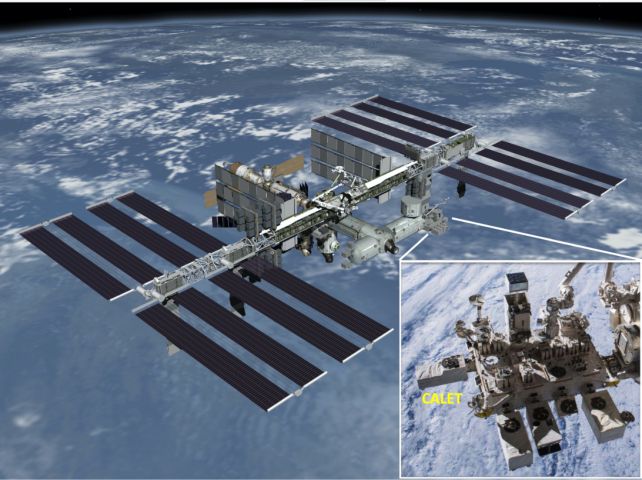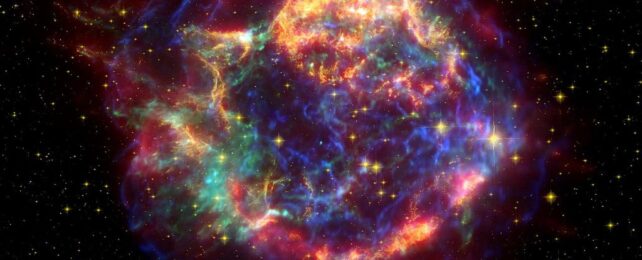The most energetic cosmic-ray electrons ever detected are giving us some vital clues as to the origins of these enigmatic particles.
Since 2015, more than 7 million particles have hit the CALorimetric Electron Telescope (CALET) strapped to the strong, broad back of the International Space Station.
This large collection has given scientists a robust dataset that, they say, points to at least one nearby source of cosmic-ray electrons – and possibly more.
"The most exciting part is seeing things at the highest energies," says astrophysicist Nicholas Cannady of the University of Maryland Baltimore County, and member of the CALET Collaboration led by astrophysicist Shoji Torii of the University of Waseda in Japan.
"We have some candidates above 10 teraelectronvolts – and if it is borne out that these are real electron events, it's really a smoking gun for clear evidence of a nearby source."
We've known about energetic cosmic rays since signs of their presence were first observed over a century ago, and for all that time, their source has largely remained a mystery.
They're tiny particles – mostly atomic nuclei, but also sub-nuclear particles such as protons and electrons – streaming through the Universe at close to the speed of light, with more power than these little things should have.

Like most energetic things in the Universe, though, scientists think they come from energetic sources. The most likely explanation so far is supernova remnants, which accelerate particles and send them zooming through space, but there are other possible sources, too.
One of these is the theoretical annihilation of dark matter, so physicists are keen to study them and understand their origin. But detecting them is a bit tricky. Here on Earth, cosmic rays collide with atoms and molecules in the atmosphere and produce showers of particles; it's the shower we detect, not the cosmic ray itself.
Some high-energy electron detectors also suffer from interference from fast flying protons messing with the results. But the space-based CALET experiment allows for direct detection of cosmic rays, up to high energies.
Previous work allowed for the detection of cosmic rays up to 4.8 teraelectronvolts. That work found that, as energy levels increased, the number of cosmic rays fell.
Using CALET's huge pool of data with new processes to sift out errors caused by interfering protons, the team were able to detect electron cosmic rays up to 7.5 teraelectronvolts, vastly increasing the range of the data.
And, interestingly, they found that there was no fall in cosmic ray incidence at higher energies. If anything, the opposite appears to be true: at the highest energies, cosmic rays seem to increase.
We still don't know where they're coming from, but, since cosmic rays lose energy as they travel through space, the high energies suggest that they must be coming from relatively close to us.
In fact, there are supernova remnants nearby whose location and proximity is consistent with the detection of some of the highest-energy cosmic rays detected in the dataset. The team hopes that continued observation will elucidate the origin further.
"These CALET observations open the tantalizing possibility that matter from a particular nearby supernova remnant can be measured at Earth," says physicist T. Gregory Guzik of Louisiana State University, leader of the US branch of the CALET Collaboration.
"Continued CALET measurement through the life of the International Space Station will help shed new light on the origin and transport of relativistic matter in our galaxy."
The research has been published in Physical Review Letters.
